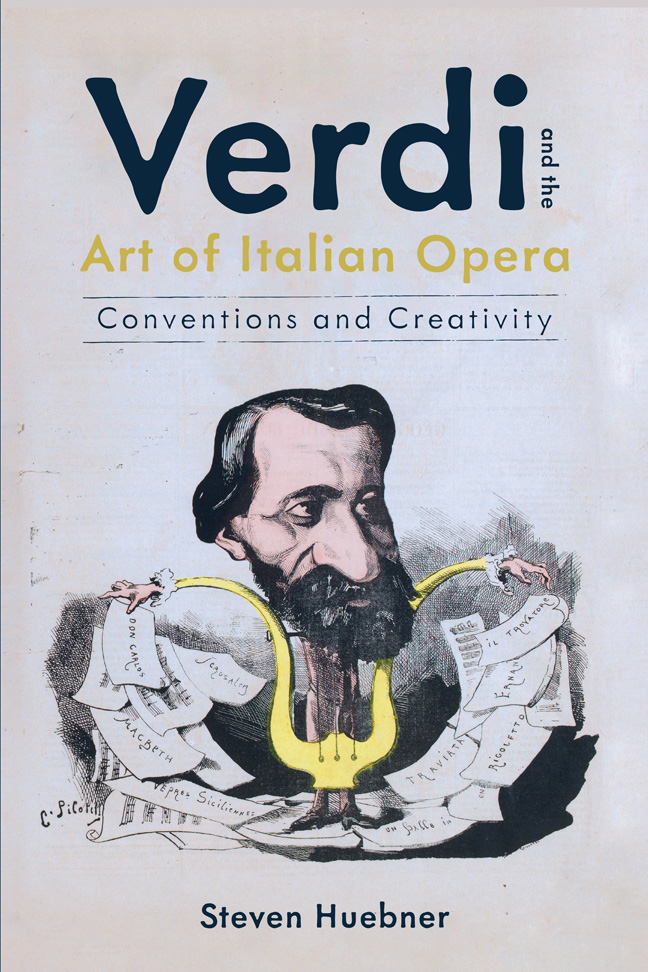3 - Melody
Published online by Cambridge University Press: 22 February 2024
Summary
Methodology
Verdi's lyrical writing and that of his predecessors and contemporaries—aria style in the broad sense discussed by Basevi—can often be understood as a hierarchical construct in which four-measure phrases group together at a higher level of syntax. Melody is the focus of the listener's attention, but cadences play a decisive role in the articulation of form according to their degree of emphasis. The last structural cadence is almost always perfect authentic in the initial key, and it is often followed, especially in solo arias, by a coda of unpredictable length. In principle, the grouping of phrases results from a style that attributes the same number of measures to each verse as the text is first exposed, although in practice, there is some variation with this. Higher level phrase groupings correspond to double quatrains, sestets, or octets.
The role of harmony in the syntax of Italian opera has generally not been sufficiently recognized. Over fifty years ago, Friedrich Lippmann described a particular grouping of sixteen measures that surfaces often in the works of Bellini, Donizetti, and Verdi by referring solely to melodic content through an alphanumeric system, a1a2ba2, where each letter represents four measures and is assigned according to whether it is a variant of the first phrase or has new material. Julian Budden took up this approach in his voluminous study of the complete Verdi operas. Joseph Kerman and Scott Balthazar elaborated on it by using capital letters, apostrophe superscripts, and subscripts indicating the number of measures in each phrase, resulting in schemas such as A4A’4B4A’’6 to describe a melody in which the last phrase is a variant of the first but stretched to six measures. In the case of a melody where the last phrase does not take up material from the first, the last is identified by the letter C. The introduction of parentheses allows a mirroring of the poetic layout. For example, A4 A’4 (S11–4) B4 C6 (S25–8) summarizes a typical melody in which the first quatrain (referenced by a capital S1 to signify the first strophe) is distributed over eight measures, and the second quatrain (S2) distributed over ten. From the time of Kerman's work, Anglo-American musicologists and even some Italian researchers have taken to describing the sixteen-measure scaffolding as examples of a lyric prototype.
- Type
- Chapter
- Information
- Verdi and the Art of Italian OperaConventions and Creativity, pp. 137 - 202Publisher: Boydell & BrewerPrint publication year: 2023



